Presidents: John Tyler
Greenway and Sherwood Forest, Charles City County, Virginia
Visited in 2006 and 2019.
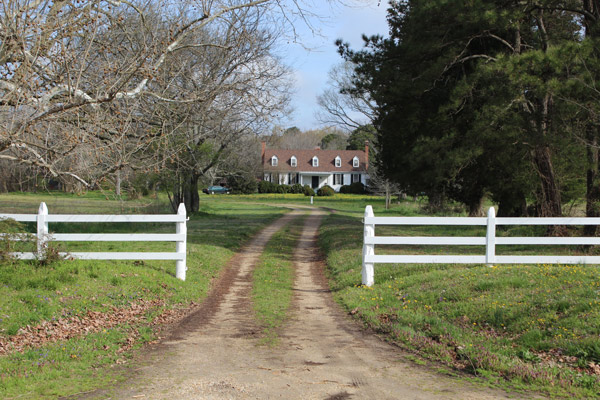
Greenway: You can't visit, but it looks nice from the road.
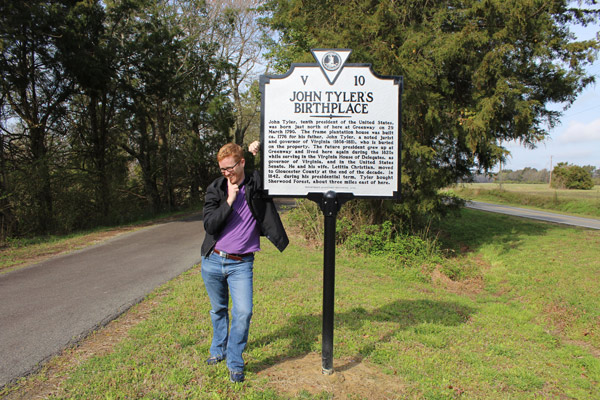
Greenway: The majestic sign at John Tyler's birthplace.
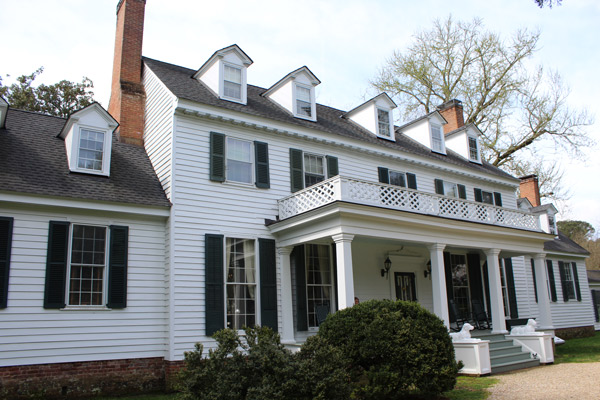
Sherwood Forest: The Tyler family's 300-foot-long wood frame home.
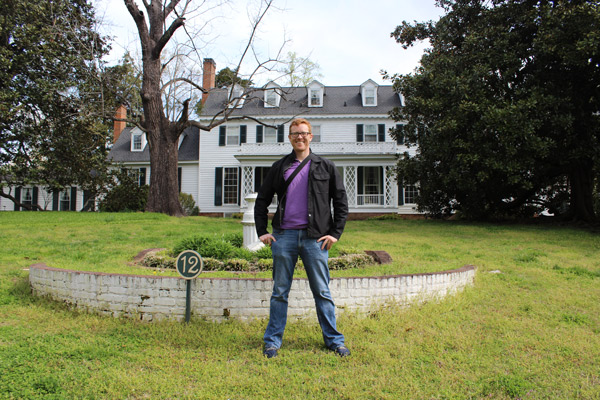
Viewing Sherwood Forest from the south lawn.
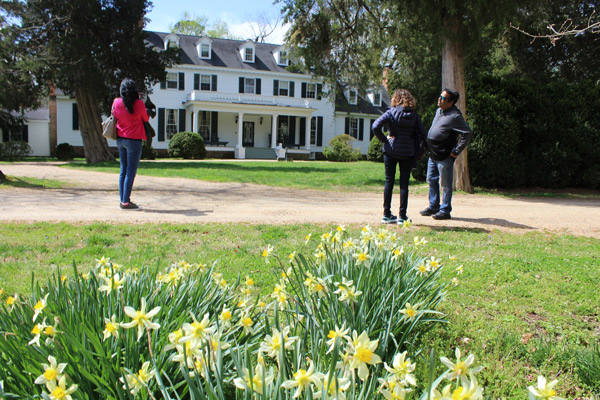
Another shot of the north face of Sherwood Forest. No pictures allowed inside.
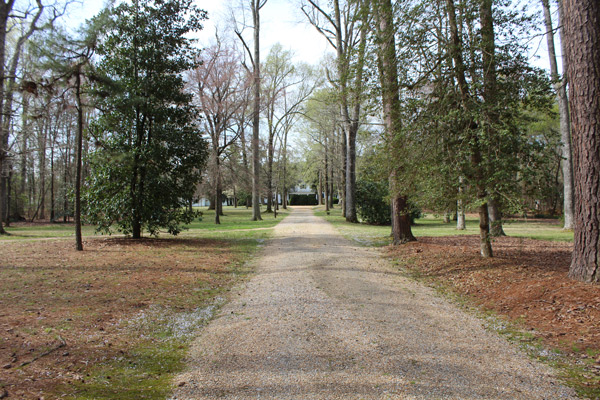
The carriageway, for all of the plantation's carriage needs.
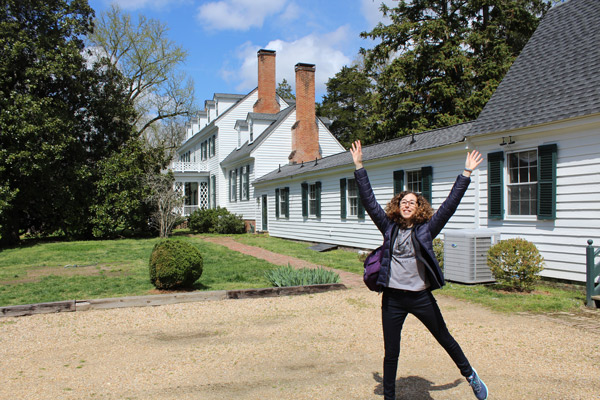
Who's excited to see a really ... uh, long house?
John Tyler, near as I can tell, was Virginia plantation culture in the shape of a man.
He was born on a plantation in 1790. Greenway, built around 1776, was his father's home. It was (and still is) near the James River, strategically located between Richmond and the Chesapeake Bay. Naturally, John had the same name as his father, because in 18th century America importing new names across the Atlantic was very expensive. John Tyler Sr. was a lawyer and judge, and saying he was connected would be a slight understatement: He was Thomas Jefferson's college roommate. In 1808 John Sr. was elected governor of Virginia. If you had a plantation in Virginia, owned more than five books and waited long enough, eventually you got to be governor. It's how polite society worked.
John Tyler Jr. grew up at Greenway there and did all the stuff required of Virginia plantation culture. Meaning, he worked diligently to become a copy of his dad. He studied the law, learned how to manage slaves, practiced all the hottest line dances, etc. etc. He was ready to practice law by the end of his teenage years and started his political career at the age of 21. It wasn't that hard, as he could use slogans like, "Hey, remember how my dad was just the governor?" John Jr. liked states' rights, probably because he had every expectation that with the right breeding, his family would be in charge of his state for the next six or seven generations.
There comes a time in every young man's life when he has to get his own plantation, and John Jr. was no exception. Right around the end of his dad's life, he purchased the nearby property known as Woodburn and had a house built there. It was his residence while he served in the U.S. House, and it was a fine residence, but it just wasn't enough. Fortunately, if you have tons of money and slave labor, you can go home again. Tyler re-acquired Greenway and lived there while serving in the Senate, then as governor of Virginia.
As president? Well, Tyler had to live in the White House. The government insisted on it. But he could still retire to the plantation of his dreams. During the first half of his term, Tyler acquired Walnut Grove, three miles down the road from Greenway. During the second half of his term he had the residence expanded and gussied up to please his child bride. They lived there until he died in early 1862, as a newly elected member of the Confederate Congress. John Tyler accepted that office because he BELIEVED in Virginia plantation culture, enough to kinda sorta commit treason.
The legend of John Tyler is endlessly rewarding for politics junkies and history dorks. He's a great avatar for "the establishment" of his era, but the zenith of his political career was a clusterf*** of anger and betrayal. Tyler's disgust with the heavy-handed executive power of Andrew Jackson compelled him to abandon the Democratic Party and side with the Whigs, even serving as their vice presidential candidate.
So it was super ironic when the death of William Henry Harrison propelled Tyler to what some people considered the most audacious power grab they had ever seen. No president had died before, and people weren't entirely sure if the vice president was totally in charge. Tyler took the "fake it till you make it" approach, asserting his status as a full-fledged president for the rest of the term. He was assertive enough that his critics eventually gave up. Which isn't to say that Tyler was REALLY in charge: The Whig party expelled him for not doing the bidding of party leaders. Rolling with the punch, the "outlaw" renamed his new plantation Sherwood Forest.
None of this is easy to understand or particularly interesting to 99.85 percent of the population, so Tyler has mostly disappeared down the national memory hole. But you can still dive in after him.
There's nothing to see at Greenway. The house is still there (and so apparently are the remains of John Sr.) but it's privately owned and off limits. Your experience begins and ends with the sign by the side of the road.
Sherwood Forest is another story. It's a presidential home unlike any other. The Tylers still own it, thanks to John Tyler's other major distinction: He was commander-in-chief of the uterus. Tyler's first wife, Letitia, bore him eight children. Then she died in 1842, presumably when her lady parts fell out from exhaustion. John Tyler was a planter, however, and he needed to seed something. Within a few years he had won the favor of Julia Gardiner, a New York socialite 30 years his junior. They married in mid-1844 and she bore him seven children. Tyler has the presidential paternity record.
When John was 63, he and Julia had a son named Lyon. Lyon grew up to be a historian -- and notably, he devoted a lot of energy to taking Abraham Lincoln down a peg. Fun! Later in life, Lyon followed in his father's footsteps and took a much younger woman for his second wife; he fathered two sons in the 1920s, while in his 70s. Those sons (as of April 2019) are still alive, their children are in position to retain control of the property for decades to come, and they still like using it as a home.
The Sherwood Forest of 2019, therefore, is NOT a restored historic home. It has been improved and redecorated many times over. Plumbing and electricity were added. People sometimes sit on the furniture in their boxer shorts.
But it is tourable! If you make a request far enough in advance, and you're willing to pony up $35 a head, you can take a peek at the first floor. Our guide showed us the entry hall, the dining room, the "gray room," the family room and the ballroom. Some of the furniture and decoration dates back to John and Julia Tyler -- you can even see some of the damage done when Union troops trashed the place during the Civil War -- but it's mixed in with family photos and relics from the 21st century. The stories you hear also span the generations, although you do get a healthy dose of Julia. She had the heaviest hand in the original decoration, and she's what you would politely call a character. She came from money, she liked spending money, and she really took to the life of a plantation mistress. (She supposedly had an ornate Cleopatra-style barge built, so that slaves could paddle her up and down the James River on social calls to other plantations.) She made sure the house was built for parties: one of the long "wing" extensions was converted into a narrow ballroom well-suited to dancing the Virginia reel, which was the Cupid Shuffle of its time.
Tyler supposedly spent his time at Sherwood Forest as a country gentleman, doing legal favors for friends, managing his properties and getting increasingly pissed off at America's political situation. He also had a bunch of young kids to deal with, so that had to keep him busy. Or at the very least it kept his slaves busy.
If you don't care to see the house, you can still walk the grounds in exchange for a courtesy fee. Parts of the old Tyler estate are still farmed, and the parcel with the house has a few surviving or restored "out buildings": There's a smokehouse, a tobacco drying barn and (most impressively) a three-seat outhouse. But the yard is pretty conventional at this point, other than the multi-generational pet cemetery. (Plantation owners need unconditional love too.) There's no longer a view of the James River, as tall trees have shot up in the swamp between the house and the river banks. But the house itself still seems like enough of a throwback to yesteryear.
The whole experience, as noted above, is curiously unique among presidential tours. The Tyler family controls the narrative at Sherwood Forest, and they don't seem to be dwelling in the gray areas. Most "plantation" sites these days devote a lot of intellectual capital to slavery, but it's not a focus a Sherwood Forest. They aren't encouraging you to wonder if Tyler was a traitor. When Tyler died, the New York Times wrote that "after the expiration of his Presidential term he retired to private life, the most unpopular public man that had ever held any office in the United States." There are some questions you might want answered.
But then again, the other presidential homes are museums, not private homes. It makes sense that they're rooting for the home team. Plantation culture demands no less!
Hollywood Cemetery, Richmond, Virginia
Visited in 2008 and 2019.
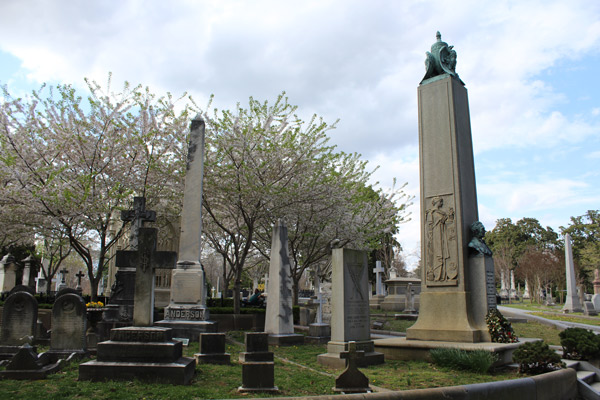
Tyler's grave at Richmond's finest graveyard.
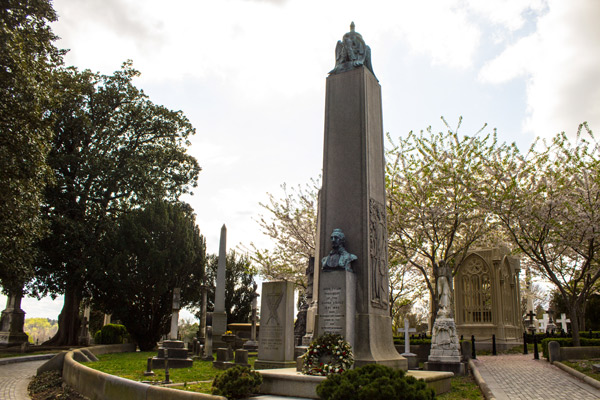
Tyler and Monroe, together again for the last time.
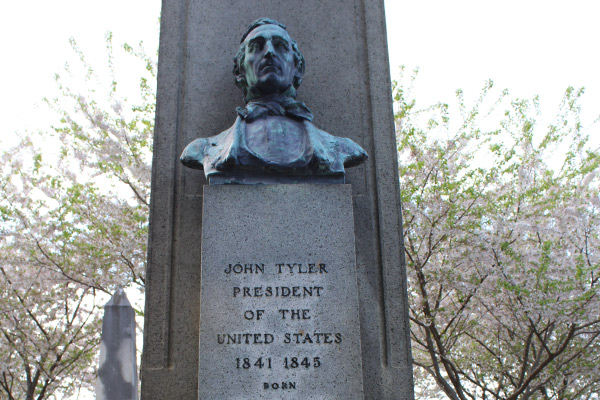
The gravesite bust of His Accidency.
John Tyler wanted to be buried at Sherwood Forest, not all that far from the pet cemetery. There's nothing weird about a man wanting to spend eternity with his favorite horse, and shame on you for thinking so.
Fate had other plans. Tyler lived long enough to see the start of the Civil War. He was even the head of the "Peace Conference of 1861," a last-ditch and not-so-serious effort to keep the upper South from seceding. When that fell through, Tyler pushed all his chips to the middle of the table, helping to organize the Confederate government and allowing himself to be elected to the Confederate Congress.
Tyler headed to Richmond to serve, and it was there that his brain declared its allegiance to the Union: Tyler had a stroke in January 1862 and died.
In this case, Tyler could NOT go home again. Union troops were running wild in Charles City County, and they enjoyed the prospect of trashing the home of a traitor president. Tyler's remains weren't going to rest in peace at Sherwood Forest. The family could really only pray that the horse would be undisturbed.
Hollywood Cemetery stepped up. It was founded in 1847 on what was then the outskirts of Richmond. And because it was an ambitious young cemetery, it made a name for itself in free agency. In 1858, the state of Virginia made an organized effort to acquire the remains of James Monroe, which were buried in Manhattan. (It was probably a Southern pride thing.) Those remains went to Hollywood.
When Tyler died, the cemetery suddenly had a shot at hosting 12.5 percent of the United States presidents to that date. Tyler was given a place of honor a few feet from Monroe, and eventually a marker was added that was a little grander than Tyler's political career. It's 15 feet tall, it has a bust of Tyler and it's decorated with a bunch of fancy carvings. Tyler's second wife is right there with him and his son Lyon -- one of his biggest defenders, as a history professor -- is nearby.
The marker doesn't mention that whole Confederacy business. I guess missing out on a horse-side burial was punishment enough.
